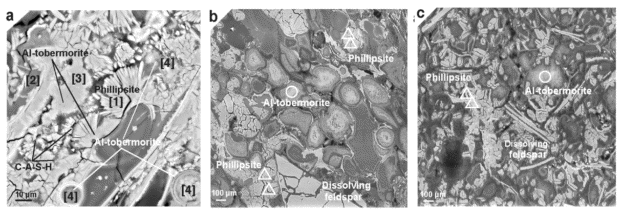Even today, many Roman concrete structures continue to stand strong and erect. Scientists have long been puzzled by this fact as to how they continue to be intact more than 2000 years later, whether partly immersed in shoreline environments or fully immersed in seawater.
These structures have not only stood the test of time, but they have also become even stronger. With the aid of ZEISS EVO and MERLIN Compact, a team of researchers from the US, Italy and China has discovered the secret ingredient that could redefine the way concrete is manufactured currently.
ZEISS EVO and MERLIN Compact
Earlier, the researchers had found that crystals of aluminous tobermorite, a layered mineral, played a major part in strengthening the concrete since they grew in relict lime particles. But now, with the help of ZEISS EVO and MERLIN Compact, they are able to get a much deeper understanding of how and why this process takes place. When seawater percolates through a cement matrix, it reacts with crystals and volcanic ash to form Al-tobermorite as well as a porous mineral known as phillipsite.
Since it takes hundreds of years for these two minerals to strengthen concrete, scientists are presently working towards creating a modern version of Roman cement. This is an interesting development since it could provide an alternative to modern cement production techniques that need high-temperature kilns, which has an adverse effect on the environment. The cement could also be employed for various applications, for example, ocean facing structures or sea walls.

SEM-Backscattered (BSE) images of Al-tobermorite and zeolite in pumice clasts, acquired with the ZEISS EVO MA 10. Marie D. Jackson, Sean R. Mulcahy, Heng Chen, Yao Li, Qinfei Li, Piergiulio Cappelletti, Hans-Rudolf Wenk (2017) Phillipsite and Al-tobermorite mineral cements produced through low temperature water-rock reactions in Roman marine concrete, American Mineralogist 102 (7) 1435-1450.
Modern technology unlocking the secrets of ancient innovations could result in exciting times ahead.
How seawater strengthens Roman concrete

This information has been sourced, reviewed and adapted from materials provided by Carl Zeiss Microscopy GmbH.
For more information on this source, please visit Carl Zeiss Microscopy GmbH.